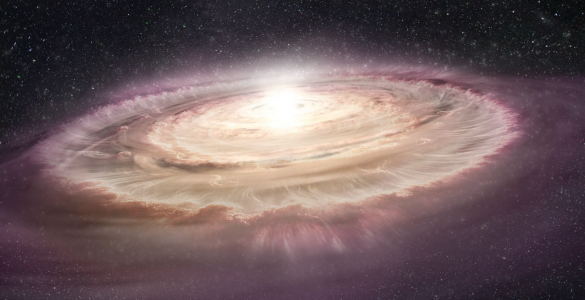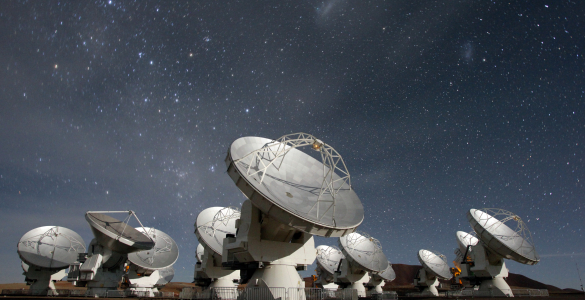Latest NRAO News
News is managed by NRAO News & Public Information. Questions about News? Have a story to share? Want to interview a scientist or create new media about our telescopes?

Astronomers have made groundbreaking discoveries about young star formation in the Large Magellanic Cloud (LMC), using the James Webb…

After taking the first images of black holes, the ground-breaking Event Horizon Telescope (EHT) is poised to reveal how…

New observations from the Atacama Large Millimeter/submillimeter Array (ALMA) suggest that planet formation can occur even in harsh stellar…

The Atacama Large Millimeter/submillimeter Array (ALMA) is thrilled to announce that a record-breaking total of 4,250 hours of science-quality…

The Atacama Large Millimeter/submillimeter Array (ALMA) new observation cycle –Cycle 11- kicks off on October 1, 2024, starting a…

The Atacama Large Millimeter/submillimeter Array (ALMA), one of the largest and most sensitive telescopes of its kind in the…

Traditionally, planet formation has been described as a “bottom-up” process, as dust grains gradually collect into bigger conglomerations over…

The Event Horizon Telescope (EHT) Collaboration has conducted test observations with the highest resolution ever obtained from the surface…

How do supermassive black holes get so big? An international team of astronomers, including scientists at the U.S. National Science Foundation National Radio Astronomy Observatory (NSF NRAO) have discovered a powerful, rotating, magnetic wind that they believe is helping a galaxy’s central supermassive black hole to grow.

Most of the Universe is invisible to the human eye. The building blocks of stars are only revealed in…





